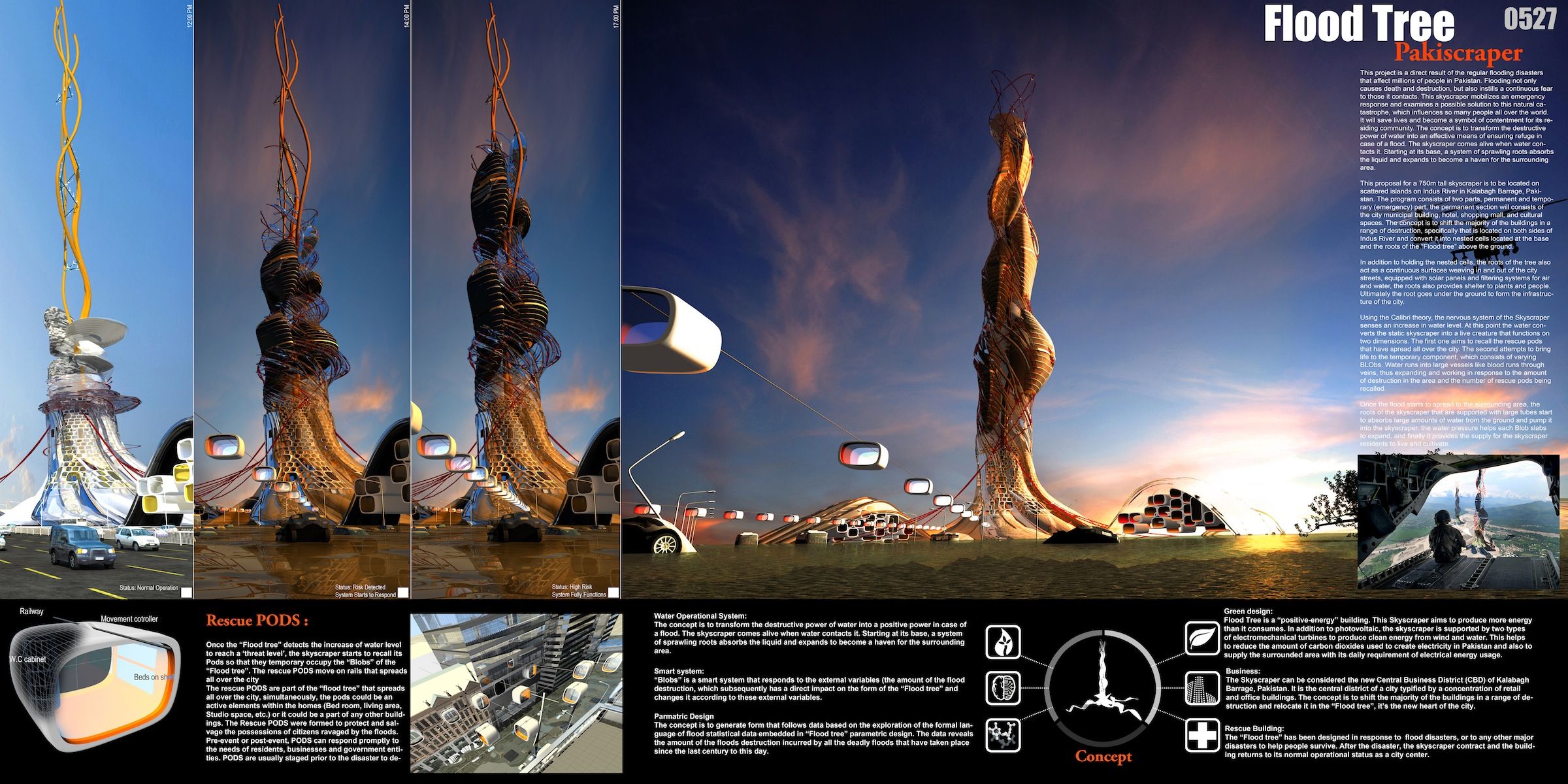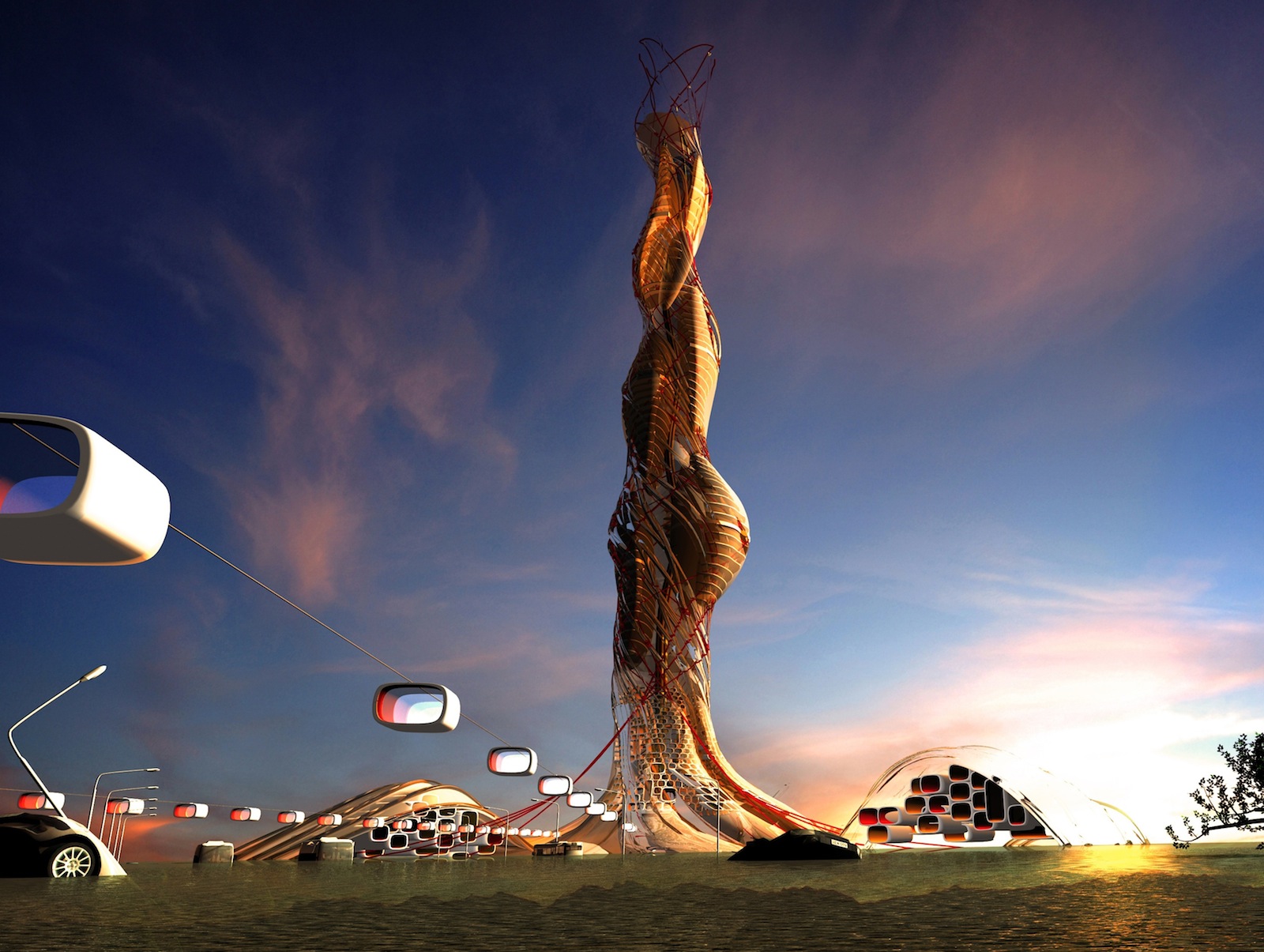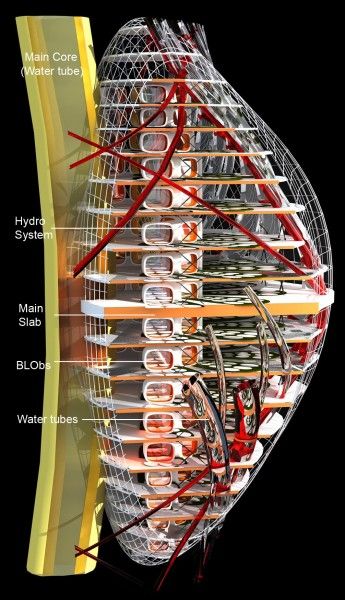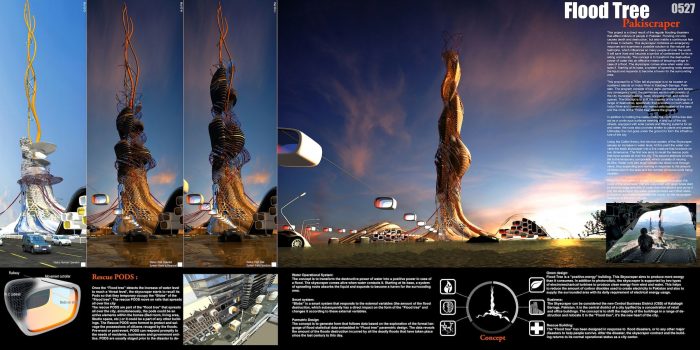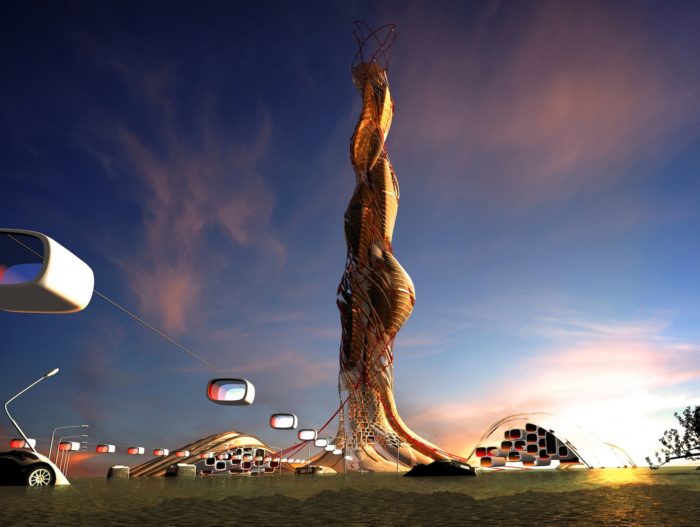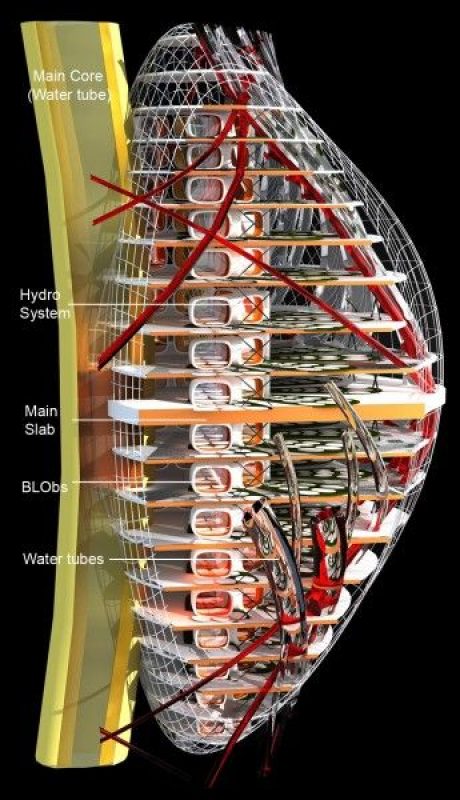Flood tree is a direct result of the regular flooding disasters that affect millions of people in Pakistan. Flooding not only causes death and destruction, but also instills a continuous fear to those it contacts. This skyscraper mobilizes an emergency response and examines a possible solution to this natural catastrophe, which influences so many people all over the world. It will save lives and become a symbol of contentment for its residing community. The concept is to transform the destructive power of water into an effective means of ensuring refuge in case of a flood. The skyscraper comes alive when water contacts it. Starting at its base, a system of sprawling roots absorbs the liquid and expands to become a haven for the surrounding area.
This proposal for a 750m tall skyscraper is to be located on scattered islands on Indus River in Kalabagh Barrage, Pakistan. The program consists of two parts, permanent and temporary (emergency) part, the permanent section will consists of the city municipal building, hotel, shopping mall, cultural spaces, and apartments. The concept is to shift the majority of the buildings in a range of destruction, specifically that is located on both sides of Indus River and convert it into nested cells located at the base and the roots of the “Flood tree” above the ground.
In addition to holding the nested cells, the roots of the tree also act as a continuous surfaces weaving in and out of the city streets, equipped with solar panels and filtering systems for air and water, the roots also provides shelter to plants and people. Ultimately the root goes under the ground to form the infrastructure of the city.
Using the Calibri theory, the nervous system of the Skyscraper senses an increase in water level. At this point the water converts the static skyscraper into a live creature that functions on two dimensions. The first one aims to recall the rescue pods that have spread all over the city. The second attempts to bring life to the temporary component, which consists of varying BLObs. Water runs into large vessels like blood runs through veins, thus expanding and working in response to the amount of destruction in the area and the number of rescue pods being recalled.
Once the flood starts to spread to the surrounding area, the roots of the skyscraper that are supported with large tubes start to absorbs large amounts of water from the ground and pump it into the skyscraper, the water pressure helps each Blob slabs to expand, and finally it provides the supply for the skyscraper residents to live and cultivate.
